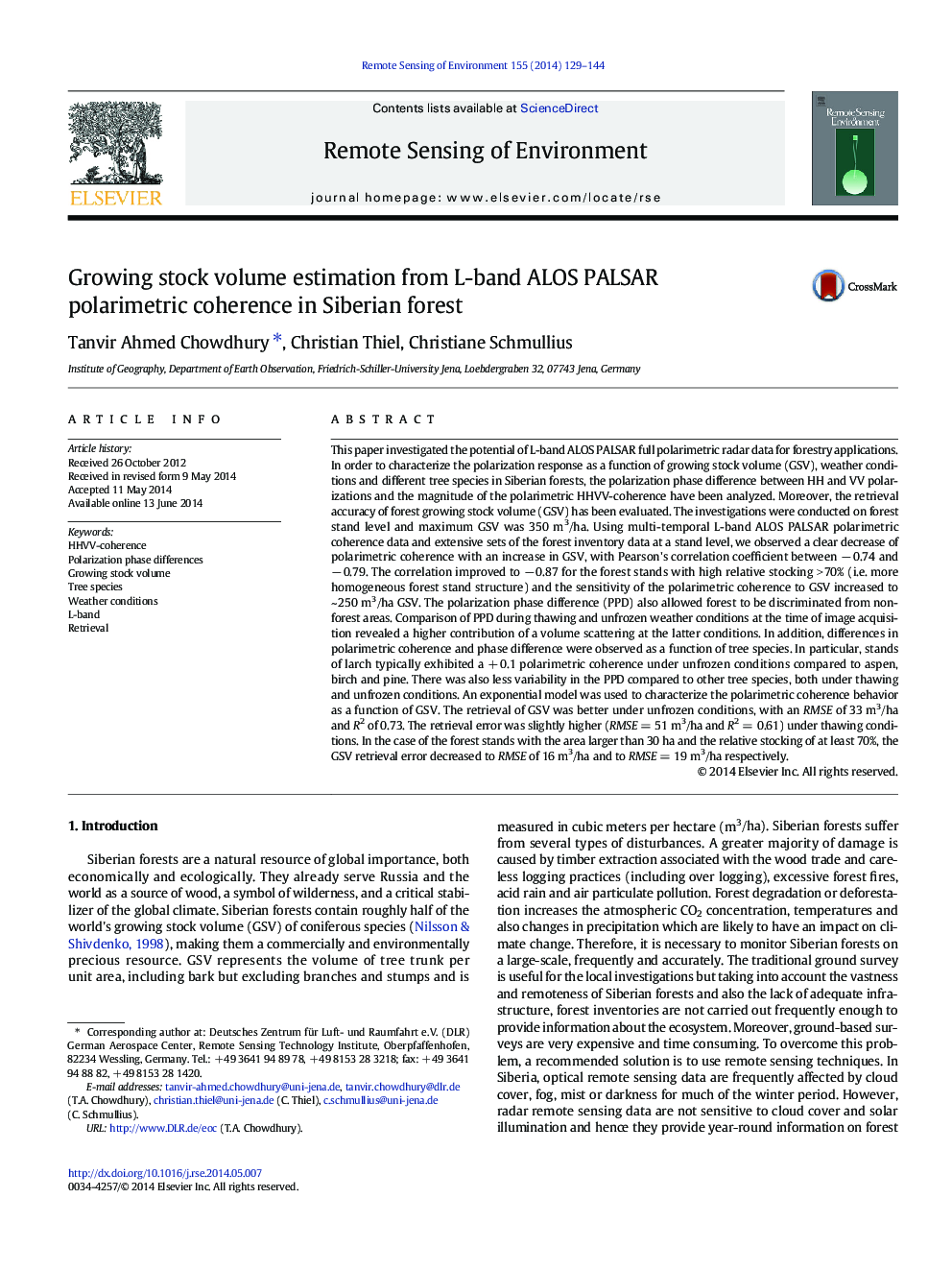| کد مقاله | کد نشریه | سال انتشار | مقاله انگلیسی | نسخه تمام متن |
|---|---|---|---|---|
| 6346598 | 1621245 | 2014 | 16 صفحه PDF | دانلود رایگان |

- Growing stock volume (GSV) and HHVV-coherence are correlated.
- Polarization phase differences clearly distinguish non-forest areas from forest.
- Larch is observed to differ from other tree species by +Â 0.1 polarimetric coherence.
- Retrieval of GSV performs best (RMSEÂ =Â 33Â m3/ha, R2Â =Â 0.73) under unfrozen conditions.
- Forest stand properties have positive impact on the estimation of GSV.
This paper investigated the potential of L-band ALOS PALSAR full polarimetric radar data for forestry applications. In order to characterize the polarization response as a function of growing stock volume (GSV), weather conditions and different tree species in Siberian forests, the polarization phase difference between HH and VV polarizations and the magnitude of the polarimetric HHVV-coherence have been analyzed. Moreover, the retrieval accuracy of forest growing stock volume (GSV) has been evaluated. The investigations were conducted on forest stand level and maximum GSV was 350 m3/ha. Using multi-temporal L-band ALOS PALSAR polarimetric coherence data and extensive sets of the forest inventory data at a stand level, we observed a clear decrease of polarimetric coherence with an increase in GSV, with Pearson's correlation coefficient between â 0.74 and â 0.79. The correlation improved to â 0.87 for the forest stands with high relative stocking > 70% (i.e. more homogeneous forest stand structure) and the sensitivity of the polarimetric coherence to GSV increased to ~ 250 m3/ha GSV. The polarization phase difference (PPD) also allowed forest to be discriminated from non-forest areas. Comparison of PPD during thawing and unfrozen weather conditions at the time of image acquisition revealed a higher contribution of a volume scattering at the latter conditions. In addition, differences in polarimetric coherence and phase difference were observed as a function of tree species. In particular, stands of larch typically exhibited a + 0.1 polarimetric coherence under unfrozen conditions compared to aspen, birch and pine. There was also less variability in the PPD compared to other tree species, both under thawing and unfrozen conditions. An exponential model was used to characterize the polarimetric coherence behavior as a function of GSV. The retrieval of GSV was better under unfrozen conditions, with an RMSE of 33 m3/ha and R2 of 0.73. The retrieval error was slightly higher (RMSE = 51 m3/ha and R2 = 0.61) under thawing conditions. In the case of the forest stands with the area larger than 30 ha and the relative stocking of at least 70%, the GSV retrieval error decreased to RMSE of 16 m3/ha and to RMSE = 19 m3/ha respectively.
Journal: Remote Sensing of Environment - Volume 155, December 2014, Pages 129-144